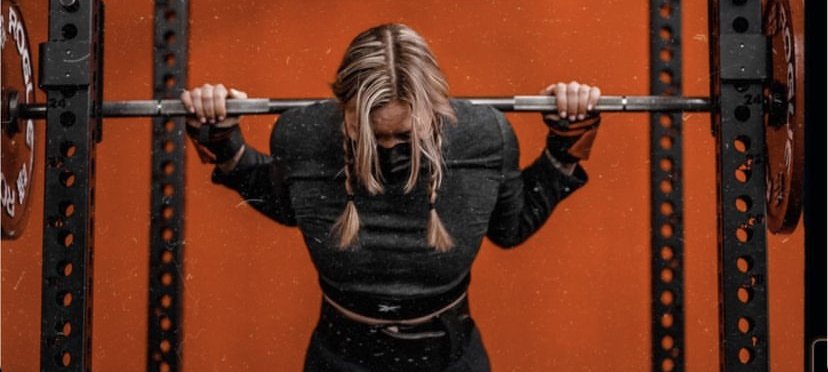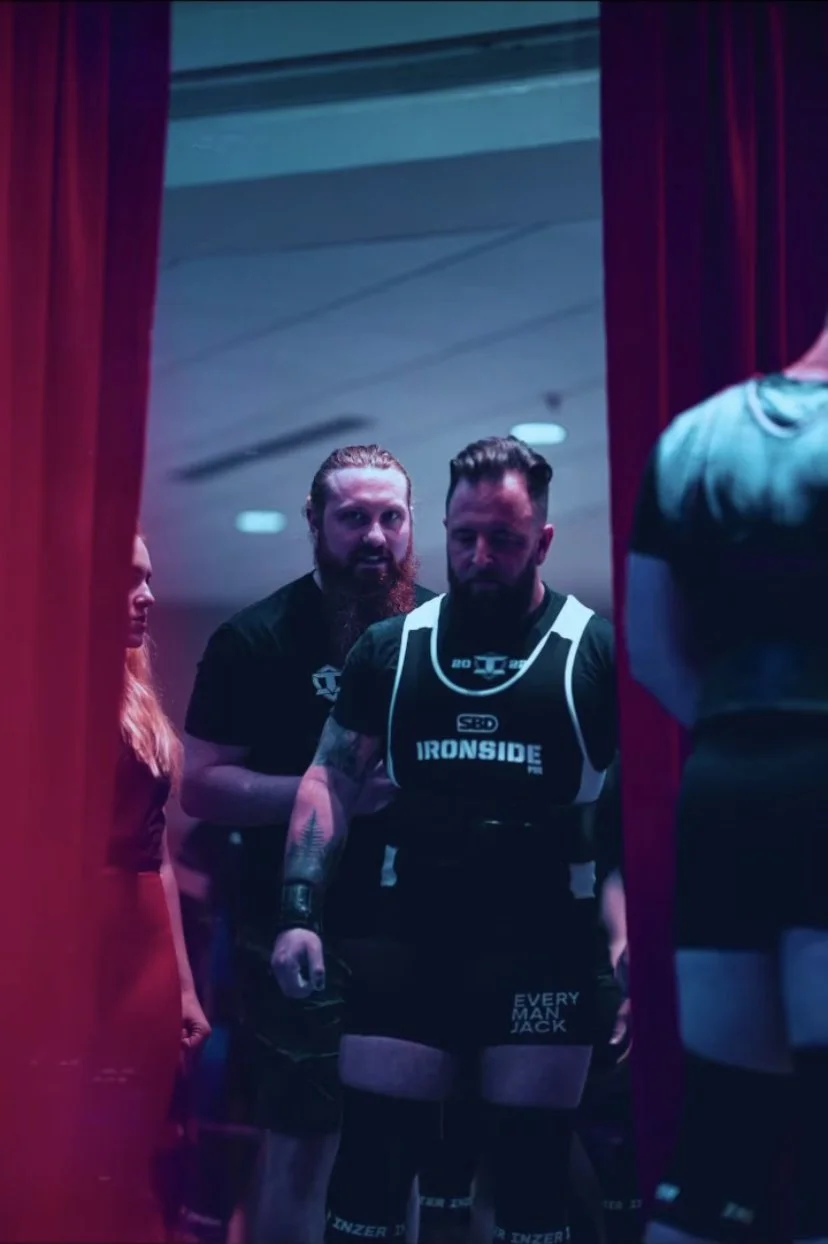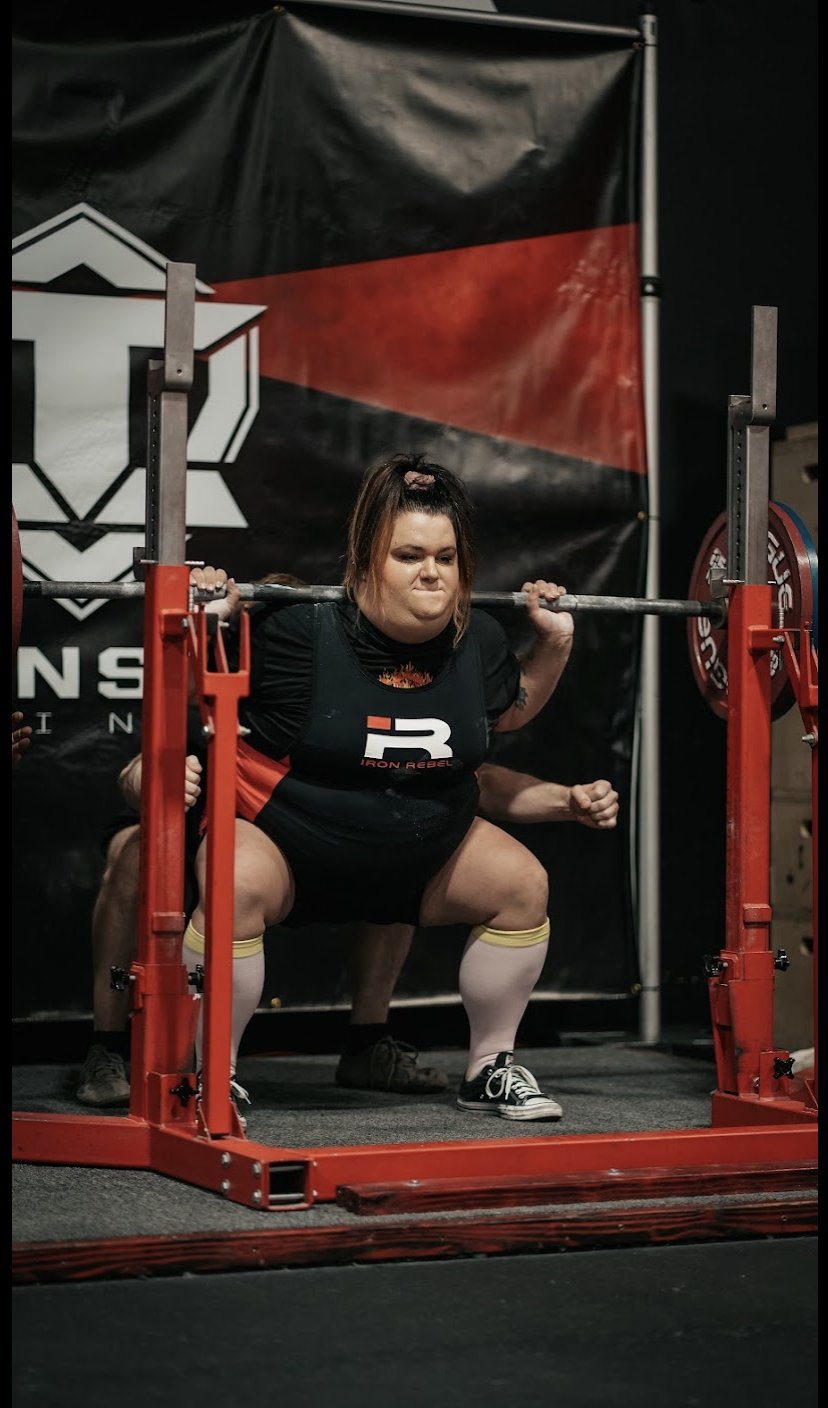Squat Depth 101: How To Improve Depth & Consistently Get Low Enough
Depth. It’s arguably the most common issue that newer Powerlifters struggle with in their squats. Often, it can feel as if you’re descending into a deep, dark hole and may not stand back up. This fact can cause anxiety around getting low for many athletes. Additionally, there are a lot of misconceptions around technique, as well as mobility restrictions making it hard to get low enough.
Not everyone needs to squat ass-to-grass. But humans of all shapes and sizes are capable of reaching depth and gaining strength in that position. Deep squats are a movement that all individuals- not just Powerlifters, should incorporate! It’s part of our daily lives & squatting low helps improve movement quality, joint health, overall strength, bone density, mobility/stability, etc.
As a strength athlete, getting low enough is crucial to your success in the sport. The truth is, even if it’s a struggle, you CAN improve depth and get comfortable doing so. It just takes time and intentional programming. Below we’ll discuss why depth may be a problem & how you can improve.
Reasons why you struggle with depth
The 3 biggest reasons people struggle with depth are: Fear, Mobility Restrictions, and Technique.
In Powerlifting, adequate depth is defined as having the top of the hip crease below the knee crease (slightly below parallel).
Many people immediately think, “If you can’t squat low, your ankles must not be mobile enough!” While ankle mobility is certainly a potential factor, it’s not the only possible cause.
As Dave Tate says, “Weaknesses are always either physical, technical, or mental.” The same is true for squat depth.
1. Fear
When you’ve got a bunch of weight on your back, you naturally don’t want to put yourself into a position that might result in you getting stuck. This is a simple truth, but if you can eliminate any fear of getting stuck down there, you’ll have an easier time committing to a proper depth.
Problems
Deep squats can be scary. Especially if you don’t have a spotter or safeties, you may be afraid of getting down and never coming back up.
Having a lot of weight on your back can make you wonder whether you’ll be crushed by it.
The bottom part of the squat is the hardest. Achieving ascension can feel grueling and require a lot of effort.
If you don’t go down as far, you’ll be more likely to get back up and less likely to be crushed under heavy loads.
We have a fear of falling and a fear of failing.
This fear of depth isn’t something you can magically turn around with a single mindset shift. It’s part of being an athlete- embarking in scary and challenging feats.
Building confidence and getting comfortable with struggle is the only way to diminish that fear.
Solutions
Take your time warming up! Warm up sets are extremely important for squats. Starting light and focusing on depth as you slowly work your way up to the working weights will help you maintain that depth with confidence
Read our full guide on how to do warm up sets
Set up safety bars, so worst case scenario if you do get stuck, you can just drop the weight
Work with weights that you’re confident in lifting. If you don’t think you can physically complete a full depth rep, you might be lifting too heavy, or you might be lifting a weight that you need to become more familiar with
2. Mobility Restrictions
Different areas may be restricted- typically, it's either ankle, hip, or thoracic mobility- or a combination of the three.
Ankle Mobility: this will inhibit how far forward your knees can travel. Find your heels lifting while you squat? Ankles may be your restriction.
Hip Mobility: this will inhibit how much hip flexion you can get into. If your hips are “tight,” and you feel restricted from getting far down, this may be holding you back.
Thoracic Mobility: When squatting under a barbell, your upper back plays a role, too. If your upper back likes to round forward, or you can’t get your elbows pulled back, this may be your issue. Try doing a bodyweight squat and lifting your arms upward. If you can’t get them close to overhead, then thoracic range is likely what you lack.
I can’t tell you exactly what your problem is- but these are the three most common restrictions for squatting. The question is not, “are you able to pass this arbitrary mobility test,” the question is, “is one of these regions not mobile enough to squat?”
Mobility should be skill-specific, and we are just discussing the amount you need to get under a barbell and stand back up, not whether you can do the splits.
3. Technique
It’s not uncommon for lifters to claim they “just can’t get low enough,” make a tweak to technique, and suddenly be sitting on the floor. Very minute adjustments can have a profound impact on how you move. Changing stance width, toe out, bar position, improving upper back tension, bracing, etc. can be the difference between getting low enough & squatting too high.
Whatever the reason for your depth struggle, it’s something you can work on. Identifying your weakness is step one. From there, you can focus on getting better over time.
How to improve your depth
Focus on Your Mindset
Your brain tells your body where to go. If you have doubts about getting low, you won’t reach depth. It’s as simple as that.
The way to improve is by leaning into the anxiety & discomfort and continually practicing. A fear of depth has the power to hold you back in your entire sport. So, don’t respond with avoidance- instead, expose yourself over and over. Get comfortable with it.
Like anything else, facing your fear is the only way to overcome it. How do you do that with squats? You get under the barbell and squat as low as you possibly can. You do that for reps, day after day- until it’s a learned movement pattern, and you hardly have to think about it. Only squat using weights you can hit to depth. If you do that, you’ll have no reason to doubt yourself.
Think about these pieces:
Before you get under the bar, visualize yourself squatting low and sinking your reps.
When you approach the barbell, don’t unrack it until you know you have it.
Bring that sense of confidence, even fake, and stay present in the moment.
It’s a movement you’ve practiced a hundred times. Your body knows what to do.
If you don’t give up mentally and commit to the lift, you’ll stand up.
Maximize Your Practice
Film your sets so you can see yourself hit depth. Re-watch them when you’re feeling unsure.
Have your coach yell at you to get low enough.
Create an environment where depth is inevitable, the only possible option.
Afraid of failing? Fail a squat one day (with safeties, a spotter, etc.) and see what happens. That result is nothing compared to missing a squat on the platform because you didn’t get low enough. Failure occurs here and there in training- it means you’re pushing your limits, which is what this is all about, right?
And if you miss a rep sometimes? No big deal, at least you hit depth first.
Over time, depth becomes a part of your squat, just like setting your feet and taking a breath- you rarely, if ever, perform a rep without it.
2. Practice holding a deep squat
This is as specific as it gets! Incorporate the squat hold in a superset with another exercise, as part of a warm-up, or on a daily basis, practice your squat position. Grabbing a light kettlebell or dumbbell in front of you acts as a counterbalance, helping you maintain stability. Hold the position for 30 sec-1 minute at a time, getting your body comfortable with the deep squat.
3. Do Lots of Mobility drills
Simply adding a couple of exercises to your warm-up or in-between exercises can help you gain new movement where you need it to squat properly.
For ankle mobility, I like wall ankle mobilizations (face a wall, bend your knee until it touches, while keeping your heel down).
For hip mobility, some good ones are the Couch Stretch, ATG Lunge, and World’s Greatest Stretch.
For Thoracic Mobility, Wall Slides, Kneeling T-Spine Extensions, and Cat Cows are some solid choices.
Incorporate these on days off and before/during your training session to feel less restricted & improve movement patterns.
4. Experiment with Different Techniques
Squatting low enough can be as simple as slightly adjusting your technique. While we have general movement standards, many individual differences exist, so finding your strongest position takes some trial and error.
With the guidance of your coach, try changing the following to see if depth improves:
Turning your toes out slightly more
Bringing your stance a little bit wider
Pushing your knees out in the hole (think “spreading the floor”)
Playing with your high bar vs. low bar
Additionally, ensure that you’re getting a solid brace each rep (take a big breath, create pressure in your core before you descend, and hold it until you reach the top). Ensure your upper back stays tight, too. Think of squeezing your elbows together and keeping them under the barbell during the entire squat.
These small changes can make a big difference & allow you to sink those reps!
5. Still Struggling? Try Squat Shoes with a Heel
While squat shoes shouldn’t be a magic fix- as Louie Simmons once said, “You don’t want $100 shoes for a 10-cent squat,” once you have the mechanics down, they can help. That’s the key: have the movement pattern down before you drop some $$ on fancy shoes.
If you struggle with ankle mobility, balance, and reaching depth is difficult for you- squatting in lifting shoes can help. The heel is slightly elevated, requiring less ankle mobility and making it easier to find the hole.
Some athletes love them, some don’t, but it can be worth a shot. Anything helps, right?
With some adjustments to routine and tweaks to your technique, depth should be far more feasible. The next step is setting up your program to help attack this weakness.
Accessory movements to help improve depth
1. Goblet (goblin) squats
Goblet squats are a great teaching tool for new lifters and a solid accessory to help you squat lower. Even as an advanced lifter, you can see tons of benefits from incorporating them. With Goblet squats, the weight is held in front of the body, acting as a counterbalance & requiring more core strength. This position inherently promotes proper depth.
Add them into your warm-up, on a secondary squat day, or as an accessory movement after your main stuff.
2. Front Squats
Front squats are one of my all-time favorite accessories, period, for squatting & deadlifting more weight with better form. The sentiment applies in this context, too.
With the front rack position, there’s more demand on the upper back and core. The counterbalance and upright position inherently promotes proper depth, too.
If you struggle with your heels lifting at the bottom, try elevating them or wearing lifters while performing front squats.
It’s much harder to Good-morning or miss depth with a Front squat.
Incorporate Front squats instead of Back squats for a block, on a secondary day, or as a secondary movement. Your low bar will feel stronger & more confident.
3. Ass-to-Grass squats
As the name implies, this squat forces you to get lower. If depth is your struggle, getting deep is exactly what you want.
“But I can’t even get low enough!” Find a way to get as low as humanly possible, and do that with light weight to practice. Try elevating your heels, bringing your toes out, whatever you can do to sit in a deep squat, pause for a second or two, then stand up.
You can load these with a Dumbbell/Kettlebell or high bar position. Go light and focus on feeling that position.
4. Squat to box
If you’re struggling with connecting your brain to your body, squatting to a box gives you a target to aim for.
This is probably my least-used option on the list since it doesn’t quite mimic your competition squat pattern, but it can be helpful for new lifters as a teaching tool.
To perform it, set up a box that, when sitting down, allows you to reach depth.
Control your descent until your butt touches the box.
Stand right back up. Perform these with a barbell or kettlebell.
I recommend using these when you’re still learning how to squat- I think there are better options as you’re more comfortable with the movement.
5. Pin Squats
Similar to the exercise above, pin squats give you an exact stopping point to ensure you’re hitting depth.
To perform one, set the safeties below parallel, take a big brace & get your back tight when you unrack, control the bar until it rests on the pins, pause for a full dead-stop, then stand up out of the hole.
This variation is also phenomenal for forcing you to maintain tension and eliminating the stretch-reflex out of the bottom: so you’re relying more on raw strength.
They’re one of my favorite exercises for improving squat mechanics & boosting your total.
Perform these instead of your comp squats or on a secondary day to help attack that weakness.
6. Pause Squats
Pause squats are another solid variation to improve strength & get comfortable in the hole.
You just hang out at the bottom for anywhere from (generally) 2-4 seconds. The goal is to hold tension during the entire pause.
Pauses help your brain connect to your depth. You’re spending more time in your weakest spot- teaching your mind, “this is how far I need to go,” and you have less momentum on the way up, improving strength in your weakest position. Pause squats also require more bracing & provide a greater stimulus at a lighter weight- at a significantly lower percentage, you’re still receiving a training benefit.
I like to add pauses to different variations, such as an accessory lift after your main movement or on a secondary squat day.
Choose a couple of these exercises to incorporate into your training for at least four weeks, and watch your depth become more consistent.
Recap
It’s a common struggle yet an integral aspect of squatting technique. If you want to get the most out of your training, be successful on the platform, and lift at a higher standard, mastering your depth is unavoidable. There are many common reasons why athletes find it difficult- whether it be mobility, technique, or mentality. Luckily, there are also many ways to improve your squat depth. No matter who you are, you *can* squat lower, and don’t let anyone tell you otherwise. You have to find the most optimal technique, programming, and mantras to help you do so. After all, the only way to build your weaknesses is to focus on them. Make depth your focus until it becomes an afterthought, and your strength & confidence will skyrocket.













